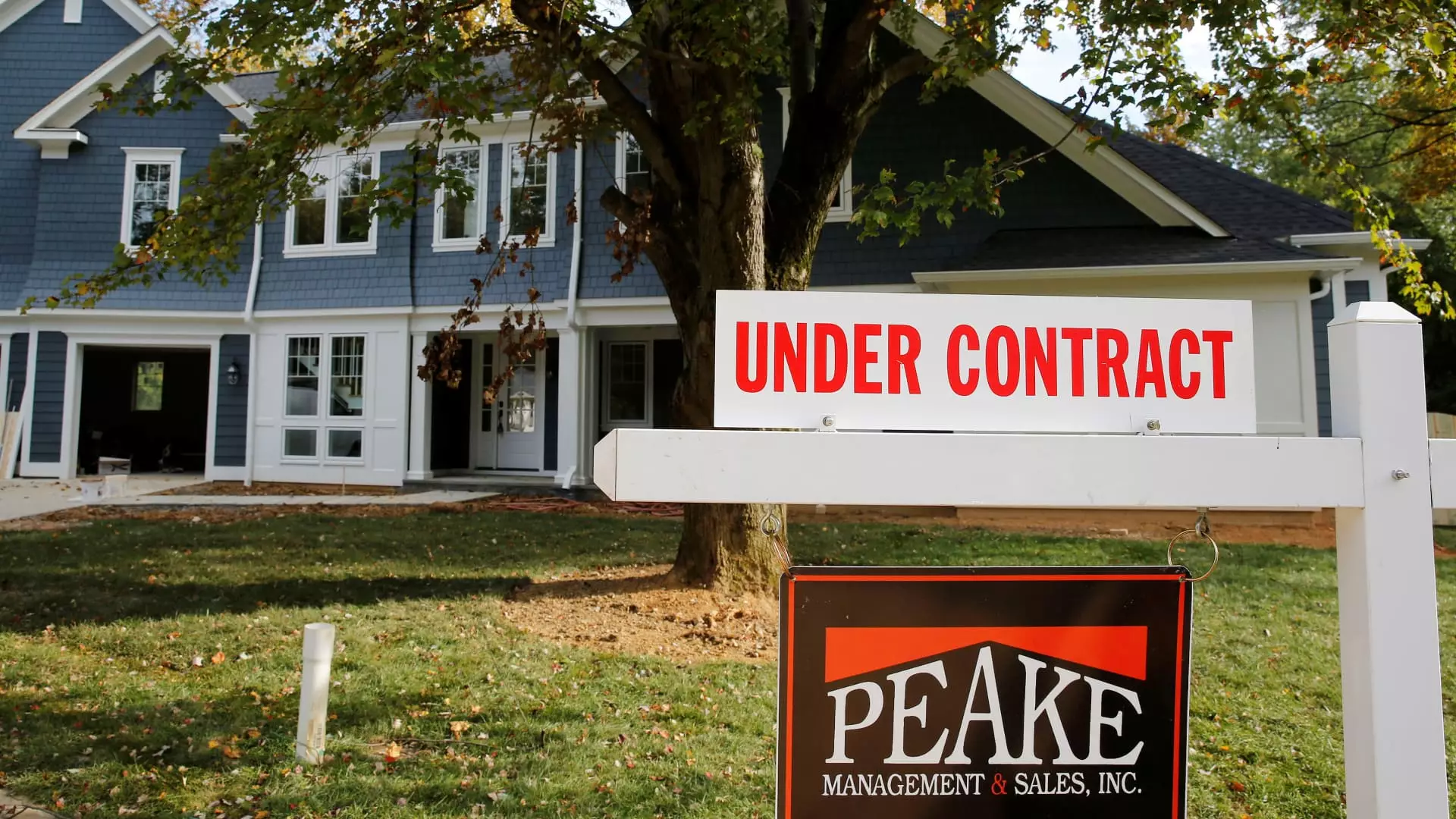In September, the housing market exhibited unexpected vigor, with signed contracts for existing homes experiencing a notable increase of 7.4% month-over-month, as reported by the National Association of Realtors (NAR). This surge far exceeded the analysts’ expectations of a modest 1% uptick, suggesting a burgeoning demand among prospective homeowners. Notably, the number of pending sales marked its highest point since March, presenting a 2.6% rise compared to the same month last year. This data serves as a timely indicator, reflecting the immediacy of buyer sentiment and market trends as they adapt to fluctuating mortgage rates.
The mortgage rate landscape has been a key player in shaping buyer behavior. As the average rate for a 30-year fixed mortgage decreased throughout August, reaching a low of 6.11% in early September, many buyers seized this opportunity, contributing significantly to the recent increase in pending sales. However, this temporary reprieve was short-lived, as rates escalated again in October, crossing the 7% mark. The volatility of mortgage rates underscores how finely tuned today’s buyers are to interest fluctuations, revealing a fragile confidence that hinges on favorable borrowing costs.
Diving deeper into regional performance, the NAR’s data highlighted increases in pending sales, particularly in the Northeast and West, while the Midwest and South remained relatively stable. The West, despite its already high home prices, showed the most significant gains, indicating that even a slight dip in interest rates could galvanize buyers in these premium markets. Economists, including Lawrence Yun, project further advancements in home sales if economic conditions remain favorable—namely, job growth, increased housing inventory, and stabilized mortgage rates.
The Future of Home Sales
Despite the promising spikes in pending contracts, potential challenges loom on the horizon for the housing market. Selma Hepp of CoreLogic cautions that the rebound in activity may be temporary, primarily due to the recent resurgence of mortgage rates. The ongoing affordability crisis could stymie long-term sales growth, making it difficult for the market to surpass 2023 performance levels in the upcoming year. The Mortgage Bankers Association’s reports indicate a 10% year-over-year increase in mortgage demand amongst homebuyers; however, these levels still reflect historical lows, emphasizing a need for caution and strategic planning.
While September painted an optimistic picture for the housing market—with rising contracts signaling an uptick in buyer interest—the persistent challenge of rising mortgage rates looms large. The delicate balance between affordability and demand will play a crucial role in shaping the future landscape of real estate. As we move into the final months of the year, stakeholders will need to navigate these complexities carefully, remaining vigilant about the economic factors that could influence buyer sentiment and market stability.

